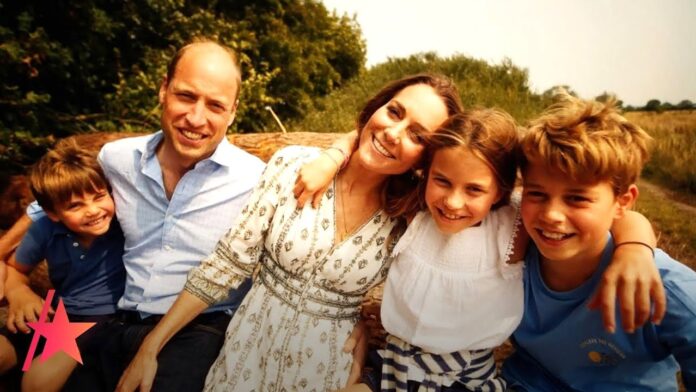Princess Kate’s recent video, shot as she recovers from chemotherapy, underscores the complex and often troubling relationship between the monarchy and modern media
Princess Kate‘s release of an intimate video while recovering from chemotherapy has sparked significant media and public attention, revealing deeper issues with the royal family’s engagement with modern media. The three-minute film, produced with a polished aesthetic by a commercial filmmaker, features scenes of Kate in a picturesque wheat field, accompanied by her children and husband, Prince William. It was intended to provide a glimpse into her recovery and address the media frenzy surrounding her health.
The video, despite its cheerful imagery, feels somewhat incongruous given Kate’s recent health struggles. The contrast between the serene visuals and the underlying reality of her illness highlights a troubling aspect of royal life: the pressure to conform to public expectations and maintain a specific image. This film, although designed to present a controlled narrative, underscores the immense pressure the royal family faces to appease public and media scrutiny.
The production style of the video, reminiscent of a glossy advertisement rather than a personal family moment, amplifies the disconnect between the intimate nature of the content and its public presentation. The use of cinematic techniques and careful editing reveals an attempt to navigate the relentless demands of media and public interest. This situation echoes Queen Elizabeth II’s decision to allow cameras into her private life for the 1969 documentary “The Royal Family,” which remains a subject of debate over its impact on the monarchy’s public image.
Kate’s video appears to be a response to the intense scrutiny she has faced since her illness became public. Despite her explicit instructions to stay out of the limelight until after Easter, the media and social media platforms continued to speculate and criticize her absence. The resulting frenzy, marked by conspiracy theories and invasive coverage, pushed Kate to address her situation through this video. This move reflects a broader trend where personal challenges are addressed through media appearances, often driven by the need to manage public perception.
The royal family’s approach to media relations has evolved significantly, particularly in the age of social media. Kate’s attempt to control the narrative through this video highlights a growing trend where public figures are compelled to manage their image meticulously, often to the detriment of their privacy. The pressure to produce content that satisfies public curiosity while maintaining personal dignity poses a significant challenge for modern royals.
In this context, Kate’s video can be seen as part of a broader strategy to manage public perception, similar to how other public figures navigate media demands. The video’s polished nature and the choice of visuals suggest a deliberate effort to present a positive image amid ongoing challenges. However, this approach raises questions about the authenticity of such portrayals and the extent to which personal struggles are commodified for public consumption.
Analysis:
- Political:
The release of Kate Middleton’s video highlights the intersection of royal duties and public expectations. By engaging with the media in such a controlled manner, the monarchy attempts to manage its public image while navigating political sensitivities around health and personal privacy. This strategy reflects the broader challenges faced by public figures in maintaining a balance between personal and public life, often driven by the need to uphold a favourable image. - Social:
Kate’s video reflects societal trends where personal and intimate experiences are increasingly shared with the public, often through media platforms. The need for public figures to manage their narratives underscores a cultural shift towards transparency and accessibility, which can sometimes conflict with the desire for privacy. This situation reveals how societal expectations influence how personal struggles are presented and perceived. - Racial:
While the video does not directly address racial issues, the broader discussion around media scrutiny and public expectations can intersect with discussions about race and representation. The way in which public figures from diverse backgrounds navigate media pressures can differ, reflecting broader societal attitudes towards race and visibility in public life. - Gender:
The video underscores gender dynamics within the royal family and the media. Female members, like Kate, often face intense scrutiny and pressure to maintain a specific public image, which can be exacerbated by traditional gender roles and expectations. The focus on Kate’s appearance and health reflects broader societal expectations placed on women, particularly in high-profile positions.
Economic:
The economic implications of Kate’s video are significant, as it reflects the monetization of personal and royal narratives. The media’s interest in such content drives revenue through advertising and increased viewership, illustrating how personal stories are commodified. Additionally, the production and promotion of such videos contribute to the economic landscape of media and entertainment, where public figures are often required to generate content to meet commercial demands.
